Posted on Mar 14, 2025
50+ Eye-Catching Book Cover Ideas to Get You Inspired
About the author
Reedsy's editorial team is a diverse group of industry experts devoted to helping authors write and publish beautiful books.
More about the Reedsy Editorial Team →Savannah Cordova
Savannah is a senior editor with Reedsy and a published writer whose work has appeared on Slate, Kirkus, and BookTrib. Her short fiction has appeared in the Owl Canyon Press anthology, "No Bars and a Dead Battery".
View profile →You know the mantra: “Don’t judge a book by its cover.” But that’s easier said than done. As an author, your book's cover is your not-so-secret weapon to give readers a strong first impression of your book... and get them to buy it.
In other words, cover design is one of your most important assets and can have an enormous impact on sales — so you need to get it right.
For this post, we've cherry-picked 54 brilliant covers to give you some book cover ideas. We’ve grouped these covers by what they have in common, along with commentary on the trends they represent — while also noting which “classic” design elements will never go out of style. Happy viewing!
Illustration-oriented book covers
1. Minimalism continues to intrigue.
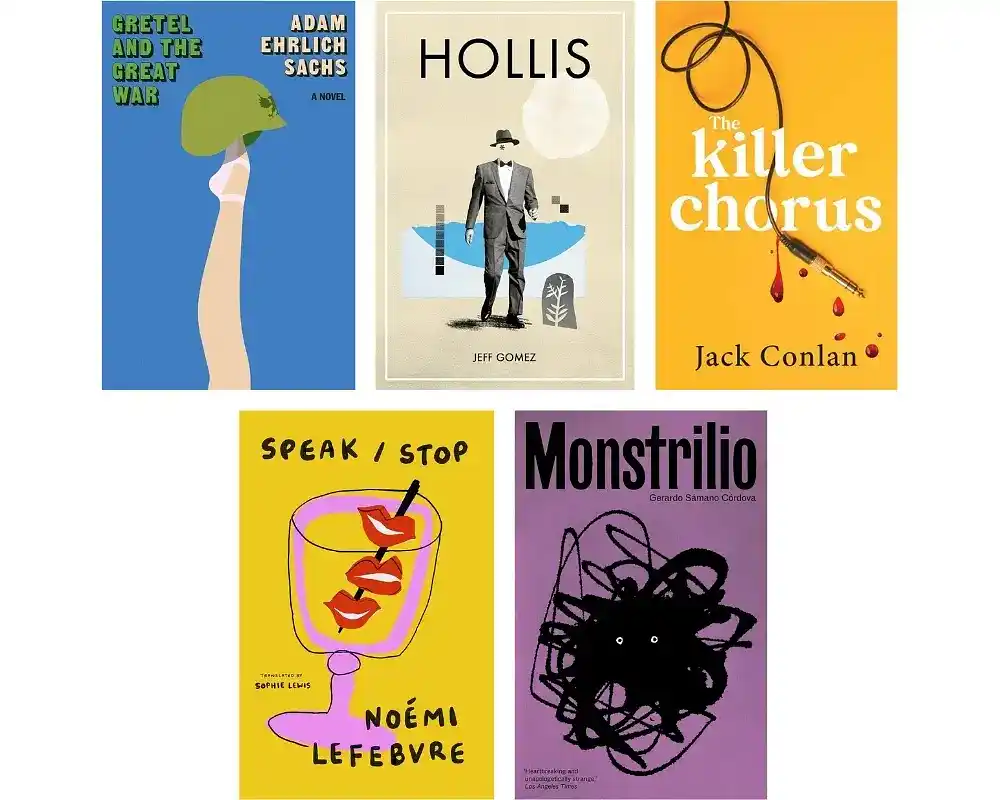
To quote Antoine de Saint Exupéry: “A designer knows that he has achieved perfection not when there is nothing left to add, but when there is nothing left to take away.” Minimalist covers strip a cover elegantly down to its bare essentials. Often characterized by a simple font and a marginal amount of content, these quiet, clever covers instead rely on white space to turn acres of nothing into something.
Cover designs like Adam Ehrich Sachs’ Gretel and the Great War manage to do a lot with a little. The simple silhouette of a ballet dancer’s leg topped with a military helmet cleverly merges feminine grace with unnerving wartime imagery — an effect further accentuated by its clean linework and bold, complementary colors.
2. But maximalism is gaining traction too.
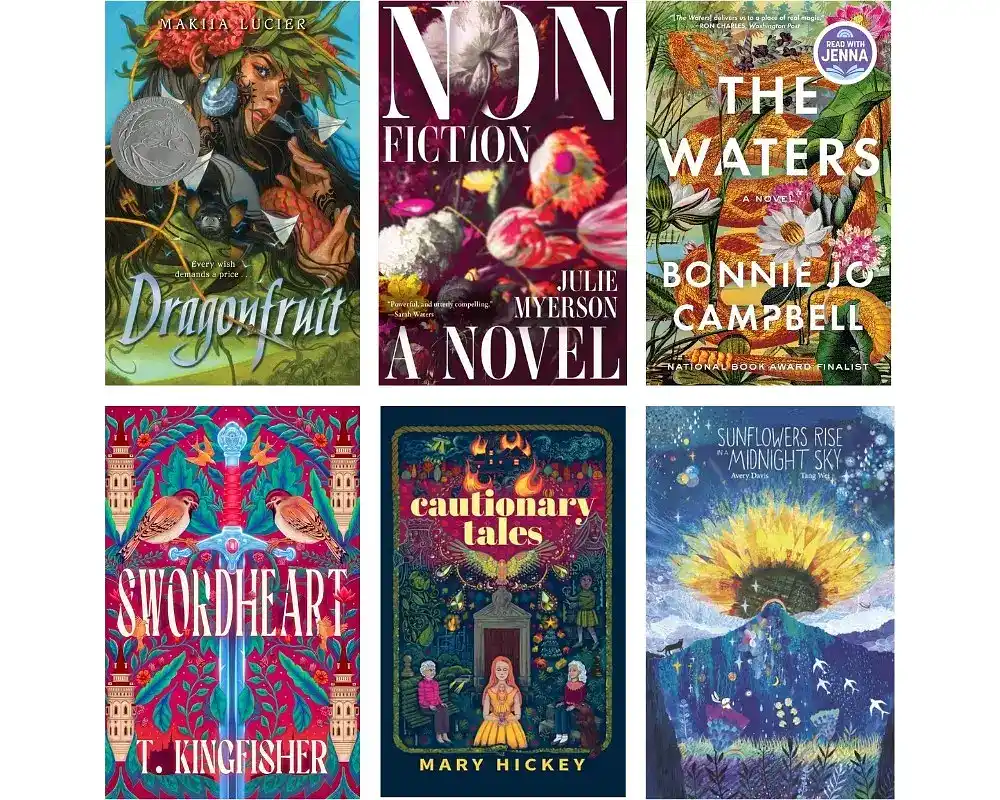
While minimalism shows no signs of slowing down, its so-called “maximalist” counterpart is steadily gathering momentum as well. The design philosophy behind these covers is essentially just: detail, detail, detail. Covers like Swordheart and Cautionary Tales are bold, expressive, and positively packed with eye-catching elements that will make any passerby stop and stare.
While the covers we’ve featured here are beautifully decorated with bright, attention-grabbing colors, that isn’t a mandatory component of maximalist design. As long as your cover is visually interesting enough to draw wandering eyes to every corner of the composition, it’ll fit the bill for maximalism.
Hire a pro book cover designer on Reedsy.
Robert J.
Available to hire
I'm a book cover designer with over 15 years of experience. I will help you transform your literary masterpiece into an eye-catching cover!
Adam H.
Available to hire
I am a book designer with over 39 years experience collaborating with authors to produce intelligent, creative solutions.
David T.
Available to hire
Exceedingly detail oriented and organized, with strong collaborative and interpersonal skills; highly dedicated, and reliable.
3. On launch days, we wear pink.
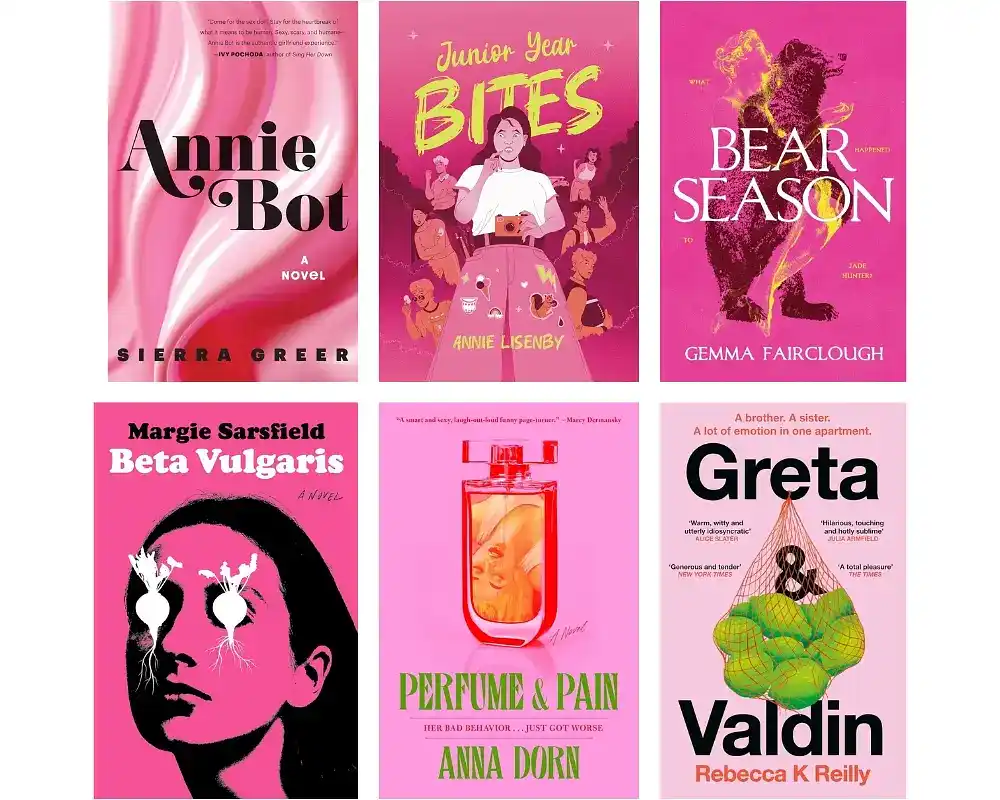
The light, salmon-y tone of “millennial pink” had the design world in a chokehold a few years back, in the mid-to-late 2010s — so much so that Pantone named rose quartz their color of the year in 2016. Millennial pink was everywhere in this era, from the pastel aesthetic of The Grand Budapest Hotel, to the cover of Ariana Grande's thank u, next.
Pink seemed to take a step back in the early 2020s… only for it to explode back onto the scene with the pop-culture-defining release of Barbie in 2023. Pink is officially back, and it’s bigger and bolder than ever — with brighter, more vibrant shades stepping into the pinklight, as seen on covers like Margie Sarsfield’s Beta Vulgaris and Annie Lisenby’s Junior Year Bites.
4. Frames within frames create a 'meta' aesthetic.
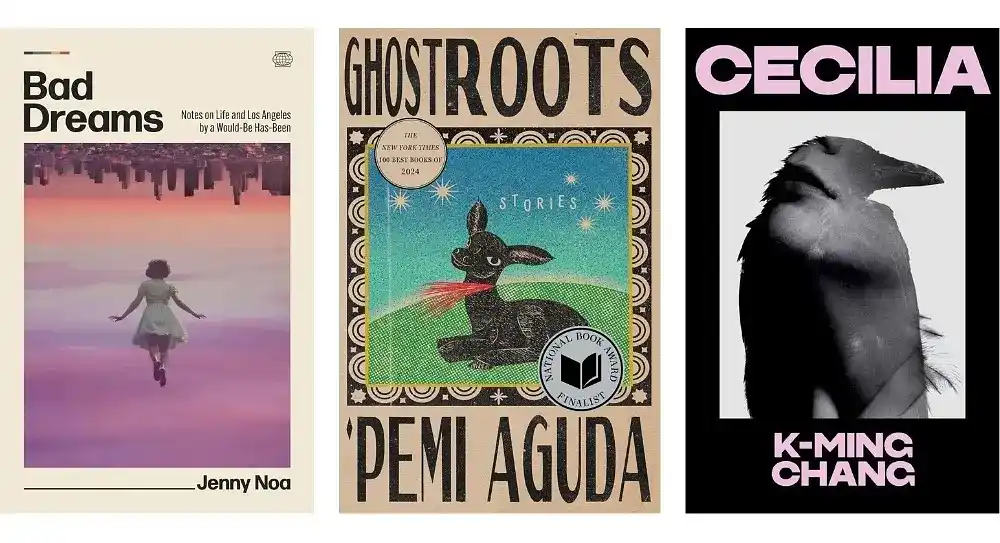
From If on a Winter’s Night a Traveler by Italo Calvino to Carlos Ruiz Zafron’s The Shadow of the Wind, the classic frame-within-a-frame motif has been around for decades — and for good reason. This style of design lends itself well to book covers; the symmetry is both pleasing and functional, delivering text-based information such as title, author name, and blurbs while catching the eye of bookstore patrons.
These designs can also easily be adapted to various different formats, whether for hardcover editions, paperbacks, e-books, or promotional materials — every publisher’s dream!
5. Hand-painted covers add a personal touch.
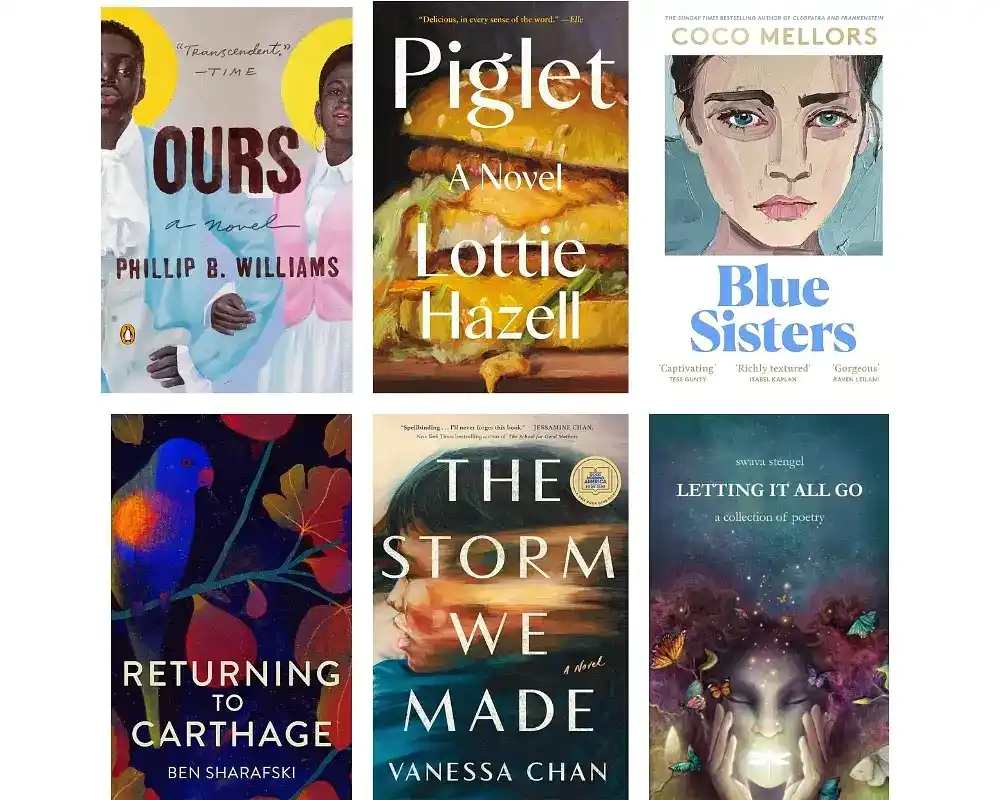
In addition to the framed designs above, there's another trend on the uptick that’s making every cover a painting — literally. Hand-painted book covers add an intimate touch that digital illustrations sometimes lack, which helps create an immediate emotional connection with potential readers. This is especially true for covers that get up close and personal like Blue Sisters — you can’t help but want to discover the story behind those forlorn eyes.
Typography-focused book covers
6. Incorporate imagery into your typography to turn heads.
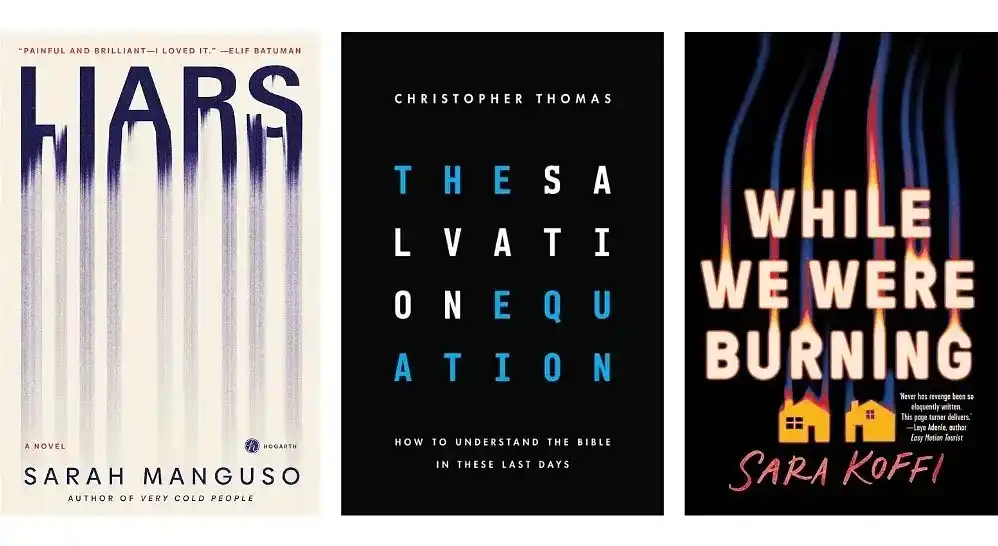
There’s no better illustration (!) of how powerful typography can be than a cover that turns its typography into an image unto itself.
Take the cover of Sarah Manguso’s Liars, for instance: it does a brilliant job conveying the book’s message in a few neat strokes. Each letter fades into smudged, vertical streaks reminiscent of mascara-tinted tears streaming down a face, evoking themes of emotional vulnerability and deception. Christopher Thomas’ The Salvation Equation also incorporates its title into the visual design, taking a more mathematical approach by cleverly arranging each letter in a satisfying grid format.
7. Big titles can create a big impact.
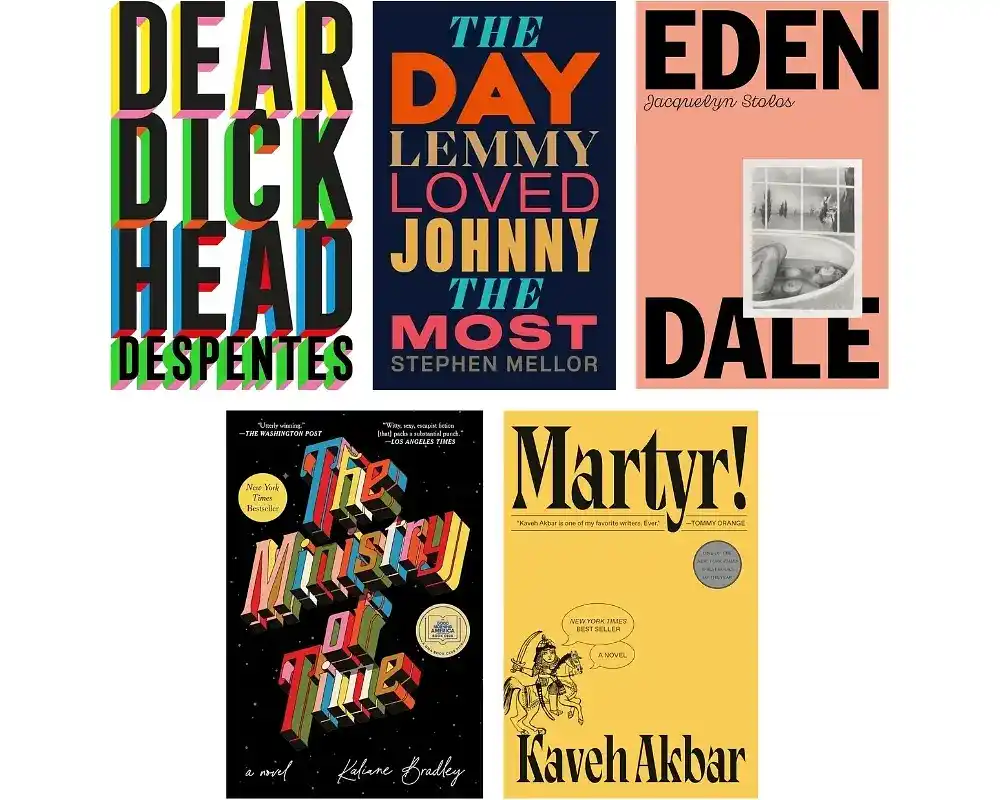
Big, bold typography on covers is another trend in recent years, and it’s not hard to see why. This kind of typography shouts: “This is a book that you want to pick up.” That, or: “Here… we… go!” Like elephants in the room, these covers demand attention.
Expect to see this sort of typography bathed in bright colors like The Ministry of Time or The Day Lemmy Loved Johnny the Most, as subtlety isn’t exactly the game here. Alternatively, some covers prefer to keep their text black to contrast with their strikingly bold backgrounds (see: Martyr! and Eden Dale).
8. Keeping text simple lets illustrations shine.
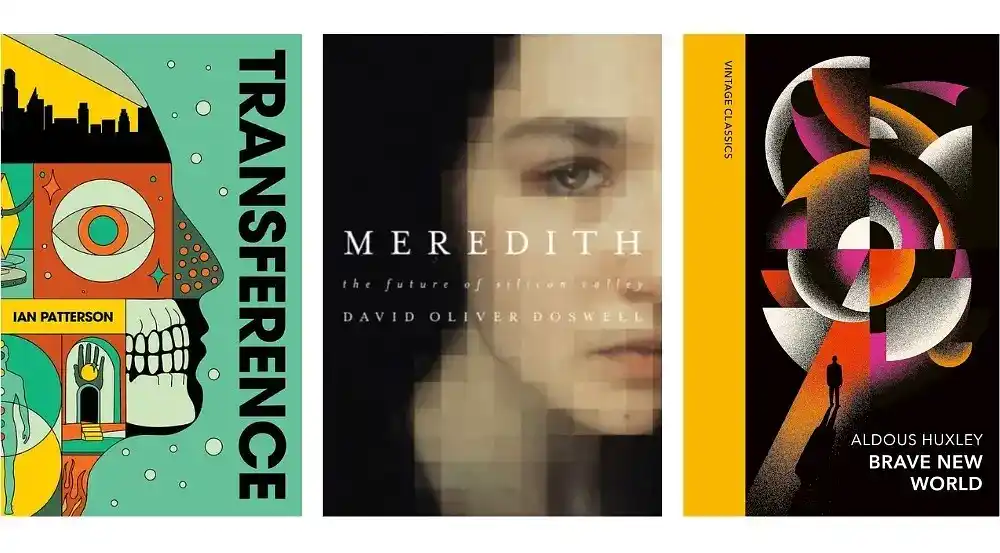
Let’s go now to the opposite end of the spectrum. Simple and understated typography can also be used with purpose on book covers — it elegantly balances the elements to highlight the illustration rather than the text. Great designers aren’t afraid to let the typography be restrained so that the illustration can take the center stage. Because of that, the end effect is stunning: covers of this kind allow the (often) jaw-dropping artwork to grip the reader's imagination.
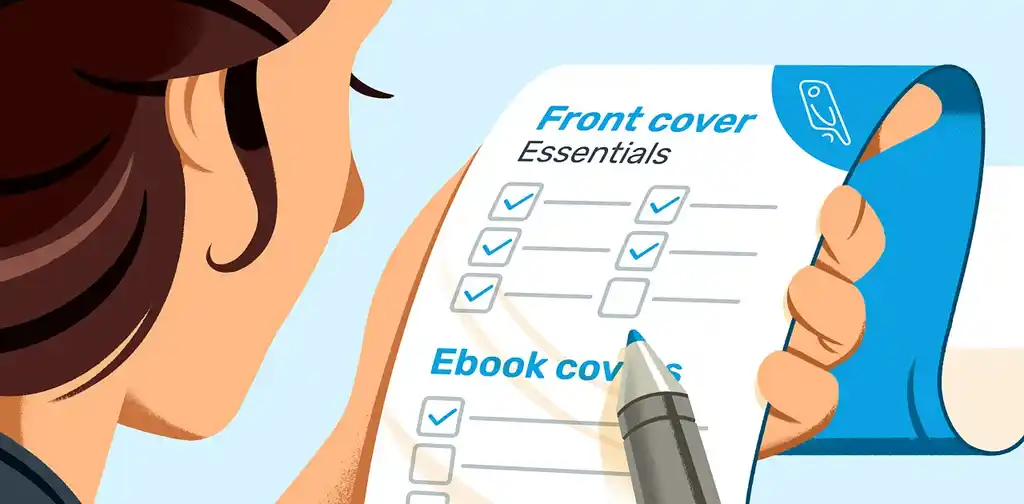
FREE RESOURCE
Cover Design Checklist
Make sure your book cover ticks all the boxes with our handy guide.
Genre-specific covers
9. Vector-based art abounds in romance.

If you’ve enjoyed a romp into the romantic in the past few years, chances are you’re familiar with this kind of cover. Since the release of Sally Thorne’s The Hating Game in 2016, bright, vector-based illustrations have been everywhere in romance. Bold background colors contrast simplified character designs — depicting our leading lovebirds in playful, stylized poses that hint towards their relationship dynamic without giving away too much.
10. Grand, fantastical covers hint at the stories within.
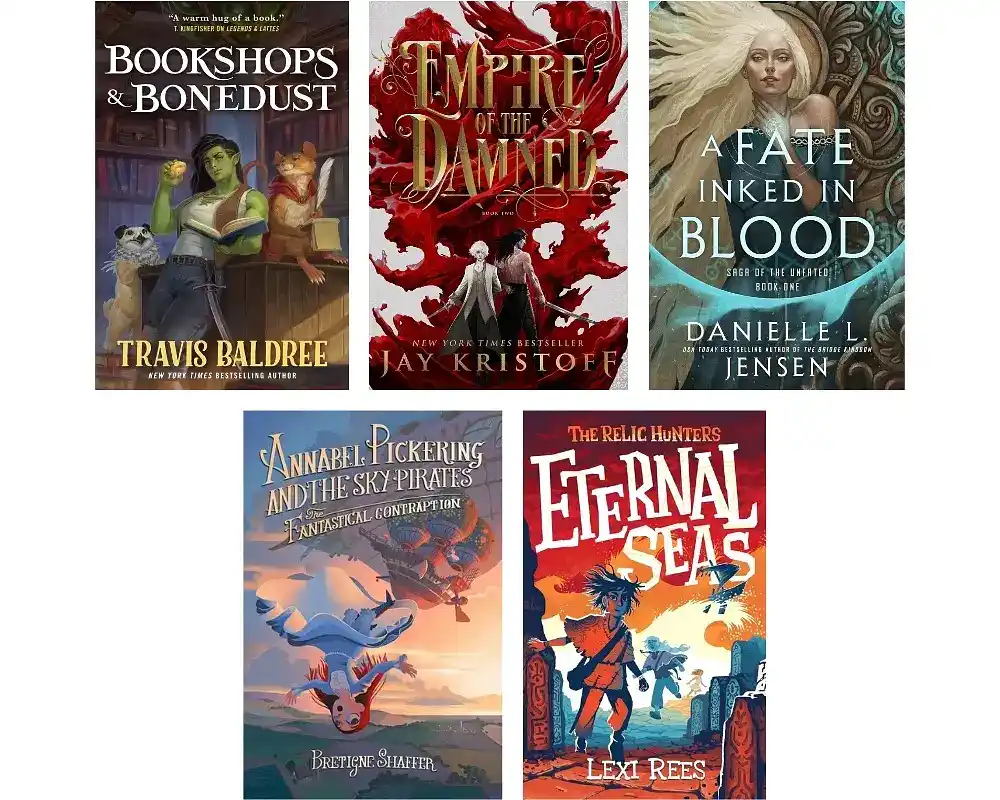
We’ve already touched on what makes a romance cover distinctly romance, but what about the other half of the romantasy phenomenon? Contemporary fantasy books are just as easy to identify on store shelves — they're chock-full of fantastical elements that will make any fantasy fan stop and stare. Swords, dragons, sacred stones, potions; anything and everything that hints towards an otherworldly adventure adorns these covers.
Intricate symbols and ornate backgrounds à la A Fate Inked In Blood are a staple. However, fantasy aimed at younger readers like The Relic Hunters and Annabel Pickering and the Sky Pirates often prefer a more whimsical aesthetic to spark the imagination of their target audience.
11. Nature meets horror.
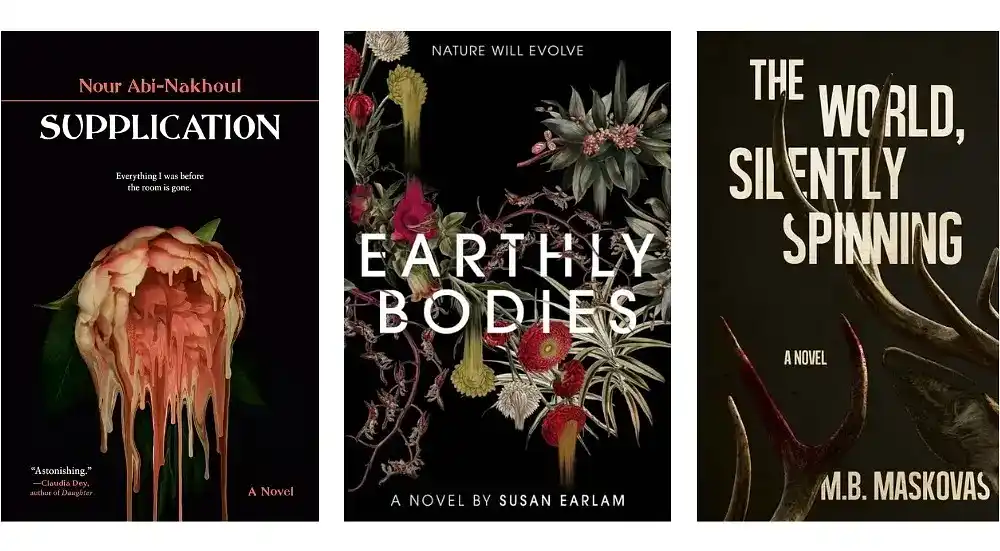
It’s natural to fear the unnatural, but make no mistake — there’s plenty to fear in the natural as well. Horror covers incorporating nature into their design have been on the rise in recent years. The imagery on covers like Supplication and Earthly Bodies might seem familiar at first glance, but taking a closer look reveals the unnerving truth that everything isn’t quite what it seems.
12. Kids love quirky animals!

It can be difficult to keep up with the chaotic, ever-changing landscape of cover design, but fear not. One thing will always remain certain: silly, emotive animals on children’s books covers will never go out of style. Whether it's a lethargic cat, a disgruntled buffalo, or an incredulous bear, featuring an expressive animal character on your children’s book cover will capture kids’ imaginations and help create that all-important emotional connection with your young audience.
Looking for further inspiration? Check out the Reedsy Book Cover Art Gallery, where you'll find tons of wonderful examples of the work being done by freelance designers today.





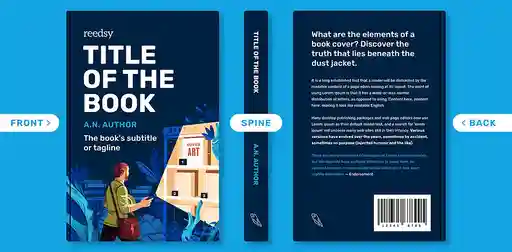


1 response
Piyush says:
21/10/2019 – 10:43
This is a wonderful post.